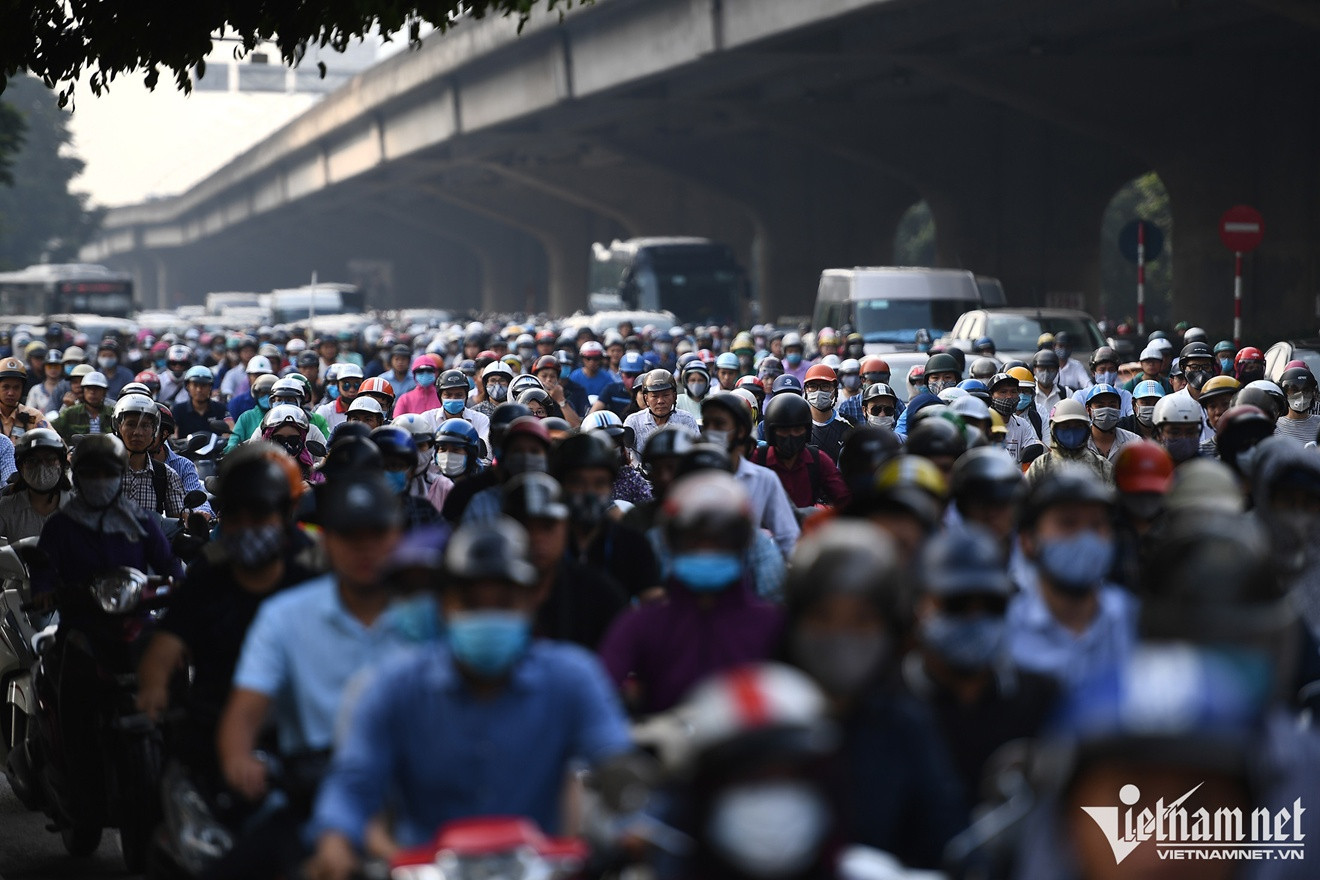As Hanoi bakes under summer heat and a haze of fine dust, face masks barely filter the dense exhaust fumes of rush hour traffic. It's a scene long familiar to residents. But with Directive 20 mandating the elimination of gas-powered motorbikes by 2026, could the city’s long-held green dream finally become reality?

On July 12, the Prime Minister issued Directive 20/CT-TTg, outlining urgent measures to tackle environmental pollution. Among its sweeping provisions, the most talked-about is a bold directive: starting July 2026, gas-powered motorbikes will be banned within Hanoi’s Ring Road 1. For the first time, the city’s “green roads” vision may be moving from policy paper to pavement.
Surprised, yet understanding
Le The Thuan, 65, who lives in Cat Linh Alley in Dong Da District, just bought a Honda Vision motorbike for school drop-offs. By evening, the new directive was announced.
“I had heard about talk of banning gas bikes, but never thought it would come this soon. It was a surprise,” he said. “Still, if the city is serious and offers proper support, I’m ready to switch to electric.”
For Nguyen Thi Lien, a 50-year-old part-time domestic worker earning around $400/month, her aging Honda Lead is more than transportation - it’s a livelihood. “I understand the reasoning, but I hope there’s financial support for people like me. Electric bikes are still expensive,” she said.
Online forums reflect a mix of shock, hope, and concern. Public support is clear. So is the demand for a well-prepared transition plan - one that won’t leave low-income workers behind in this green revolution.
The cost of delay
This policy isn’t new. Hanoi’s plan to restrict motorcycles was passed in 2017 with Resolution 04/2017/NQ-HDND. Yet nearly a decade later, the rollout has seen delays and vague timelines.
The health consequences of inaction are dire. Studies by Professors Pham Duy Hien and Nguyen Thi Kim Oanh revealed alarming levels of PM2.5 and PM10 dust in Hanoi between 2002–2005, exceeding levels in Bangkok, Manila, and Jakarta. A 2007 survey found urban NO₂ and dust concentrations regularly breached safety limits.
From 2010 to 2020, Hanoi’s average PM2.5 and PM10 levels consistently exceeded Vietnam’s air quality standards. In early 2025, PM2.5 in Hanoi spiked to 266 µg/m³ - among the highest globally.
These figures underscore what Hanoi Mayor Tran Sy Thanh declared in June: “We can’t delay any longer.” At a meeting with the Vietnam Association of Motorcycle Manufacturers, he reaffirmed the city’s intent to limit gas-powered motorbikes in four central districts.
“If we don’t act now, how can Hanoi ever become a clean, modern city like those in Japan or Europe?” he asked.
Not everyone is ready - what now?
The challenge lies in readiness, not resolve. Millions of migrant workers and informal laborers rely on gas bikes. Electric vehicles remain costly, charging stations are limited, and public transport is still underwhelming.
Directive 20 clearly states that Hanoi must support businesses in green vehicle production and infrastructure, and especially aid residents transitioning to electric vehicles. That means subsidies, tax breaks, public EV charging points, and expanded clean public transport.
Some companies, such as VinFast, have stepped up with trade-in offers for gas motorbikes. But much more is needed - especially from major players like Honda and Yamaha.
The success of the gas bike ban hinges on implementation. Without concrete steps, this directive risks becoming another shelved plan. The real measure of success will be public buy-in - not just legislation.
Ending to begin again
The coming year will be critical. There will be resistance, debate, and obstacles. But delay only repeats the mistakes of the past.
The green dream isn’t just Hanoi’s - it’s everyone’s. Directive 20 marks a turning point, not only for the capital, but for Vietnam’s national shift to clean transportation and emissions reduction under COP26 goals.
Hanoi has over 8 million registered vehicles - 6.4 million of them are motorbikes, yet fewer than 200,000 are electric. The road ahead is tough. But if not now, when?
Pham Huyen